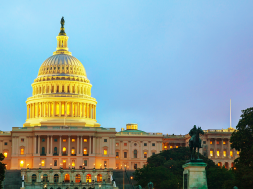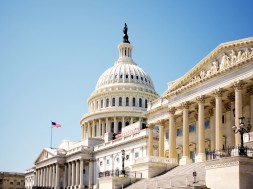
90-10 Presents an Annual Compliance Challenge for School Leadership
By Stephen T. Chema II and Ben Walker, Ritzert & Leyton, PC
Disclaimer: The contents of this article do not constitute legal or regulatory advice or counsel. Neither do they establish an attorney-client relationship of any sort. No person or entity should act, or refrain from acting, on the basis of the information discussed herein without seeking individualized, professional counsel as appropriate.
“90-10,” this simple ratio, represents the Department of Education’s mandate that all proprietary institutions must “derive at least 10 percent of their revenues for each fiscal year from sources other than Title IV, HEA program funds.” (34 C.F.R. § 668.14(b)(16).) Expressed in this way, the Department’s mandate seems deceptively simple. Unfortunately, as with much of the Title IV regulatory scheme, the contours of the 90-10 rule reveal that it is not as simple as it appears on the surface. Due to its complexity and the gravity of negative consequences that flow to institutions that violate it, the 90-10 rule presents an annual compliance challenge for school leadership.
The actual 90-10 formula is expressed as:
Adjusted Student Title IV Revenue
____________________________
Adjusted Student Title IV Revenue + Student Non-Title IV Revenue + Total Revenue From Other Sources
In this formula, Adjusted Student Title IV Revenue represents the total amount of Title IV funds disbursed to the student minus institutional matching funds from campus-based programs (e.g., SEOG and FWS) and funds that the institution returns to Title IV programs on behalf of a student. Student Non-Title IV Revenue represents cash payments made by the student or on behalf of the student by third parties. Total Revenue from other sources includes revenue derived from activities conducted by the institution that are necessary for education and training, and revenue derived from payments made by, or on behalf of, students for educational and training in qualified non-Title IV eligible programs. A “qualified non-Title IV eligible program” is a program that is not a Title IV eligible program that is a) approved or licensed by the appropriate State agency; b) is accredited by a Department-recognized accrediting agency; c) provides an industry-recognized credential or prepares students to take an examination for an industry recognized credential or certification issued by an independent third party; d) provides training needed for students to maintain State licensing requirements; or e) provides training needed for students to meet additional licensing requirements for specialized training for practitioners that already meet the general licensing requirements in that field.
Institutions must utilize the cash basis method of accounting in calculating revenue and must apply “the presumption” that any Title IV funds the institution disburses on behalf of a student will be used to pay tuition, fees, or other institutional charges regardless of whether they are credited to the student’s account or paid directly to the student. There is one significant exception that allows certain types of non-Title IV revenues to be applied first, therefore defeating the presumption rule. The so-called “funds applied first are: (i) grant funds from non-Federal entities/independent private sources; (ii) funds from a government agency under contract with the institution to provide workforce training (e.g., via the Workforce Investment Act); and/or (iii) funds from qualified savings plan for educational expenses (e.g., 529 plans). Unless there are “funds applied first” the presumption can have the effect of crowding out student cash payments thus preventing their inclusion in the 90-10 calculation. However, when the combination of Title IV revenue and funds applied first exceeds the amount of tuition and fees charged to the student, the Title IV revenue is reduced by the amount in excess of the tuition and fees charged.
One way to visualize this effect is to imagine the denominator of the 90-10 calculation as a cabinet with two drawers. The cabinet’s top drawer holds Adjusted Student Title IV Revenue and Student Non-Title IV Revenue. The bottom drawer holds Revenue From Other Sources. In the top drawer space is limited. It will only hold the cash equal to the amount of tuition and fees charged. The bottom drawer, however has an unlimited capacity to hold cash. For example, assume program tuition and fees equal $10,000. Then assume $10,000 of Title IV funds are disbursed, there are no “funds applied first,” and the student made a cash payment of $500. Under the presumption rule the $500 cash payment is crowded out by the Title IV funds and cannot fit in the top drawer. However, if the $500 payment was a state grant instead of a student cash payment, it would reduce the Title IV to $9,500, which would be reflected as the Adjusted Title IV Revenue in both the numerator and denominator.
Failure to comply with 90-10 in a single year leads to the conversion of an institution’s Program Participation Agreement (“PPA”) to provisional status for the two following years. Although institutions on provisional status may still participate in Title IV student aid programs, provisional status changes the institution’s relationship with the Department in a few significant ways. Provisionally certified institutions must obtain prior approval to add an additional location to their Eligibility Certification and Approval Report (“ECAR”) before Title IV funds can be disbursed to students at the new location. Further, the Department’s rules governing provisionally certified institutions allow the Department to revoke the PPA if it determines the institution “is unable to meet its responsibilities under its [PPA].” (34 C.F.R. § 668.13(d)(1).) Such revocation decisions do not provide the institution with a formal appeal process, which differs from the appeal rights provided for schools subject to Department actions to limit, suspend, or terminate Title IV eligibility.
Of course, failure to meet the 90-10 standard in two-consecutive fiscal years, causes the institution’s Title IV participation to terminate automatically as of the end of the second consecutive fiscal year.
In addition to the risk of loss of Title IV eligibility, the 90-10 rule is increasingly providing fodder to qui tam whistleblowers who allege that mischaracterized revenues included in 90-10 calculations result in liability under the False Claims Act.
Consumer Financial Protection Bureau has also recently claimed that some proprietary schools motivated by a desire to develop non-federal revenue streams have operated private loan programs in violation of the Dodd-Frank Wall Street Reform and Consumer Financial Protection Act.
The 90-10 rule (originally conceived as the “85-15” rule) was established as a quality assurance measure based on the idea that a quality educational program is one which should be able to generate some minimum amount of non-federal revenue by attracting students, employers, or other third parties that are willing to pay for the program’s cost through the use of private funds. As a matter of public policy, the wisdom of this conclusion is certainly debatable, as is whether adherence to the 90-10 has any real connection to program quality. Nevertheless, from the Department of Education’s point of view, the 90-10 rule remains a centerpiece of its program integrity rules, and for that reason, all private sector institutions must establish and maintain effective strategies to assure compliance with the rule.
Because institutions are essentially prohibited from limiting Title IV awards or failing to certify loans for 90-10 purposes, successful 90-10 compliance strategies must emphasize the development of alternative non-Title IV revenue streams.
The following are a few questions and answers regarding 90-10:
Under what circumstances can an institution include revenue from the sale of student accounts receivables in the denominator of its 90-10 calculation?
If selling student accounts, the proceeds of such sales may be counted as revenue if the sale was made as part of an arm’s length transaction for fair market value and without recourse. In a case ultimately settled on appeal to the Secretary of Education, Secretary Duncan stressed that such transactions must have “the requisite conditions of competitive, rivalrous, free market dealings.” In the Matter of Star Technical Institute, Dkt. No. 09-22-SA, Sec’ y Op., 5 (Feb. 7, 2012).
What are the rules for including revenue from activities conducted by the institution that are necessary for education and training?
According to the Department’s regulation, published at 34 C.F.R. § 668.28(a)(3), revenue may be included in the denominator of the 90-10 calculation when that revenue is derived from activities conducted by the institution that are necessary for the education and training of its students. In order to qualify for this treatment, the activities must be: a) conducted on campus or at a facility under the institution’s control; b) performed under the supervision of a member of the institution’s faculty; and c) required to be performed by all students in a specific educational program at the institution.
Can proceeds from private loans count as revenue in the 90-10 calculation?
The short answer is yes, however how much of the revenue counts depends on the structure of the transaction. Different rules apply if the institution guarantees the student’s repayment of all or part of the loan. When the institution guarantees all of the student’s obligation to repay the loan, the loan is a full-recourse loan. In such cases, the institution may recognize all of the proceeds of the loans that are used to repay charges for tuition and fees. However, if the student defaults and the lender calls the institution’s guarantee, the institution must subtract the amounts it pays to the lender from the denominator of the 90-10 calculation for the fiscal year in which the payment is made. The treatment is different when the institution guarantees only a portion of the loan (partial recourse). The Department has provided that institutions may only count the loan proceeds that represent the unguaranteed portion of the loan and no-after the fact adjustments are made in the event of a student’s default. See Federal Student Aid Handbook, 2014-2015, Vol. 2 at p. 2-63. The Department’s guidance further states that institutions may include proceeds from the sale of non-recourse institutional loans in the denominator of their 90-10 calculations.
Can institutions establish scholarships and then recognize revenue from the awards of scholarships as revenue in their 90-10 calculations?
The Department’s rules allow the inclusion scholarship revenue under certain conditions. First, the scholarships must be disbursed from an established restricted account.
This means that the institution must establish and fund the scholarship through a dedicated account. It is not enough to simply allocate part of the operating budget to the scholarships and fund them through the institution’s general operating account.
Second, the scholarship awards can only be counted to the extent that the funds in the dedicated account represent designated funds from an outside source or income earned on those funds. This rule exists to prevent institutions from simply recirculating their own profits, which the Department traces back to Title IV funds, in order to pay for scholarships. Instead, the Department requires that scholarships be established with funds that do not come from within the institution or its principles. Using an independent third party donor or foundation to endow the scholarship is one approach that may be used to ensure the scholarship is funded with “outside” money.
What requirements must a non-Title IV program meet in order for student payments for tuition and fees to be included as revenue in the denominator of the 90-10 calculation?
As noted earlier, the Department’s regulation permits the inclusion of revenue from qualified non-Title IV programs. In many cases, one of the easier ways to ensure that the non-Title IV program is treated as a qualified program will be to obtain state or accreditor approval. If your program provides approved continuing education units necessary for licensed professionals to maintain their good standing, your program would also clearly meet the standards set forth in the regulation. To date, the Department has not issued guidance to define an “industry recognized credential.” By implication, an industry recognized credential is one that is recognized by employers across an industry segment. In order to bolster an argument that a particular credential is so recognized, institutions could confer with employers to determine which industry certifications or other credentials are required or preferred when a hiring decision is made. Additional evidence of wide industry acceptance for a credential may also be found if the credential is endorsed by a nationally recognized trade association that represents a significant part of the industry or sector, or if the credential is approved by a state workforce agency.
In practice, the 90-10 rule presents a significantly greater challenge for institutions than its deceptively simplistic formulation suggests. Likewise, the rules that govern when additional non-federal revenue streams can be included in the calculation are neither intuitive nor straightforward. However, institutions must continue to think strategically about developing revenue streams as an alternative to Title IV. The importance of this exercise is highlighted by the continued emphasis on 90-10 compliance by the Department in audits and other enforcement actions. It is also important given recent legislative proposals such as S. 1664 (“Military Veterans Education Protection Act of 2015”) which, if enacted, would consider revenue from Veterans Education benefits and the GI Bill to be included as “federal revenue,” or H.R. 4101 (“Protecting Our Students and Taxpayers Act of 2015”) which aims to revert the 90-10 rule back to the 85-15 rule while also adopting the expanded definition of federal revenue used in S. 1664. Therefore, in the current environment, it behooves every institution subject to 90-10 to re-evaluate its 90-10 compliance strategy and to develop additional initiatives to ensure adequate sources of non-Title IV revenue.

STEPHEN T. CHEMA II advises clients on a wide array of matters related to compliance with student financial aid programs under Title IV of the Higher Education Act, including topics such as 90/10, the incentive compensation rule, institutional and student eligibility issues, and gainful employment. He also specializes in advising postsecondary institutions on compliance with privacy laws, including the Family Educational Rights and Privacy Act (“FERPA”), the Gramm-Leach-Bliley Act (“GLBA”), and the Federal Trade Commission’s “Red Flags” rule. In addition, his work involves counseling institutions on issues related to anti-discrimination and employment law, campus security and consumer protection. Mr. Chema also works extensively in the area of immigration law, specializing in business immigration in the following areas: non-immigrant visa petitions (including H1-B, L-1, E, O, P and TN); labor certification and permanent residency; I-9 compliance and worksite enforcement; and citizenship.
Mr. Chema is a member of the National Association of College and University Attorneys (NACUA), the American Immigration Lawyers Association’s D.C. Chapter, and the Young Lawyers and Administrative Law divisions of the American Bar Association. Mr. Chema, who is admitted to practice in Maryland, Virginia and the District of Columbia, received a B.A. from The College of the Holy Cross and a J.D. from The Catholic University of America.
Contact Information: Stephen T. Chema II, Esq. // Senior Associate // Ritzert & Leyton, PC // 11350 Random Hills Road, Suite 400 Fairfax, VA 22030 // (703) 934-9835 (voice) // stchema@ritzert-leyton.com

Robert (Ben) Walker, Jr. has been admitted to practice law in the Commonwealth of Virginia since 2005. He works with Ritzert & Leyton’s postsecondary education law group and has participated in a broad range of litigation and investigatory matters, including state and federal civil cases, as well as regulatory and civil issues involving the U.S. Department of Education, state agencies, and accrediting agencies.
He has also focused on criminal investigations, including issues involving or relating to the administration of Title IV, HEA program funds. Mr. Walker also assists clients assess and address compliance matters, such as those related to Title IV, Title IX, and the Clery Act.
Mr. Walker received his law degree from the University Of California Hastings College of Law. He received a Bachelor of Arts degree from the University of Virginia.
Contact Information: Robert B. Walker Jr. // Senior Associate // Ritzert & Leyton, PC // 11350 Random Hills Rd #400 Fairfax, VA 22030 // 703-934-9834 // bwalker@ritzert-leyton.com










